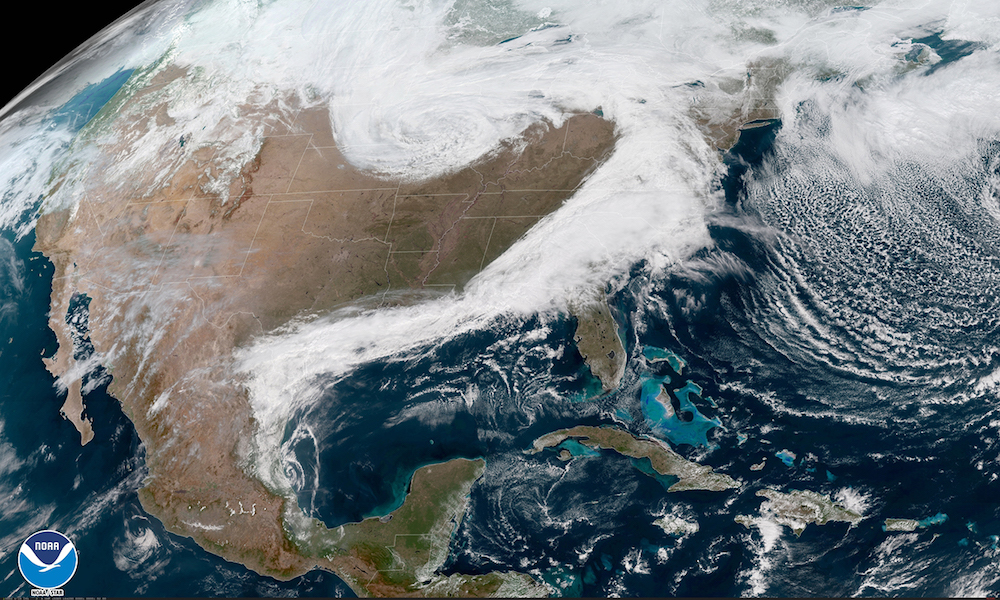Why Meteorologists Don't Know if Tonight's Nor'easter Will Bring Rain or Snow

A powerful storm is on track to strike the U.S. East Coast tomorrow, the second nor'easter to visit the area in two weeks. The storm will arrive tonight (March 6) at 10 p.m. EST and will last until 4 a.m. on Thursday (March 8), according to a winter storm warning issued today (March 6) by the National Weather Service (NWS).
But will this storm soak the region with rain or bury it in snow?
"Substantial snow accumulations" could blanket New York City and parts of Long Island, New Jersey, Connecticut and the Hudson Valley, the NWS reported. However, exact amounts of snowfall are a little harder to pin down, and estimates for some areas range from nearly 18 inches (46 centimeters) to as little as 5 inches (13 cm), according to the NWS.
Why is tomorrow's snowfall proving so tough to predict? [Weirdo Weather: 7 Rare Weather Events]
For this storm's forecast, agreement among weather models is actually above average, but "the devil is in the details," Stephen DiRienzo, a meteorologist with the NWS, told Live Science in an email.
"The greatest uncertainty in the forecast is along the rain/snow transition line, which for this storm extends from Philadelphia to New York to Boston," DiRienzo explained.
"Oftentimes, there is literally a straight edge to the boundary between rain and snow, and so on the snowy side there may be large accumulations of snow, with none on the rainy side of the boundary. So, where that line between rain and snow sets up, that will determine tomorrow's weather for millions of people," he said in the email.
Sign up for the Live Science daily newsletter now
Get the world’s most fascinating discoveries delivered straight to your inbox.
In this case, the storm shifting to the southeast would mean that major northeastern cities would experience substantial snowfall, while a shift to the northwest would douse those cities with heavy rainfall, DiRienzo said.
That explains the variability in NWS maps showing potential snowfall: The high-end map estimates 10 inches (25 cm) of snowfall for New York City, while the low-end map predicts 0 inches (0 cm). The prediction is similar for Boston, with a snowfall range from a high of 7 inches down to 0 inches (18 to 0 cm).
"At this point, we're just slightly unsure of the exact axis of the heaviest snowfall," Michael Musher, a meteorologist with the Weather Prediction Center at the National Oceanographic and Atmospheric Administration (NOAA), told Live Science.
"There's always variability in each system — it just depends on its development and orientation," Musher said.
Various computer models have forecast similar movements for the storm — what remains to be seen is how well they can forecast temperature from the ground up into the upper atmosphere, which could affect the position of the rain/snow transition line, DiRienzo said.
To track these temperatures, weather balloons are deployed by the NWS twice daily — at 7 a.m. and 7 p.m. local time — from about half of the agency's offices, ascending to heights of over 100,000 feet (30 kilometers). The data gathered closer to the storm's arrival, such as data from the weather balloons slated to go up tonight and early tomorrow morning, will help provide more-accurate estimates of where the storm's heaviest snow will fall, DiRienzo said in the email.
"The computer models will give a forecast of expected temperatures in the atmosphere during tomorrow's storm, but those 7 a.m. balloon launches will be critical to determining where the rain-snow line sets up, and therefore, what weather millions of people can expect," he said.
Original article on Live Science.

Mindy Weisberger is an editor at Scholastic and a former Live Science channel editor and senior writer. She has reported on general science, covering climate change, paleontology, biology and space. Mindy studied film at Columbia University; prior to Live Science she produced, wrote and directed media for the American Museum of Natural History in New York City. Her videos about dinosaurs, astrophysics, biodiversity and evolution appear in museums and science centers worldwide, earning awards such as the CINE Golden Eagle and the Communicator Award of Excellence. Her writing has also appeared in Scientific American, The Washington Post and How It Works Magazine. Her book "Rise of the Zombie Bugs: The Surprising Science of Parasitic Mind Control" will be published in spring 2025 by Johns Hopkins University Press.









